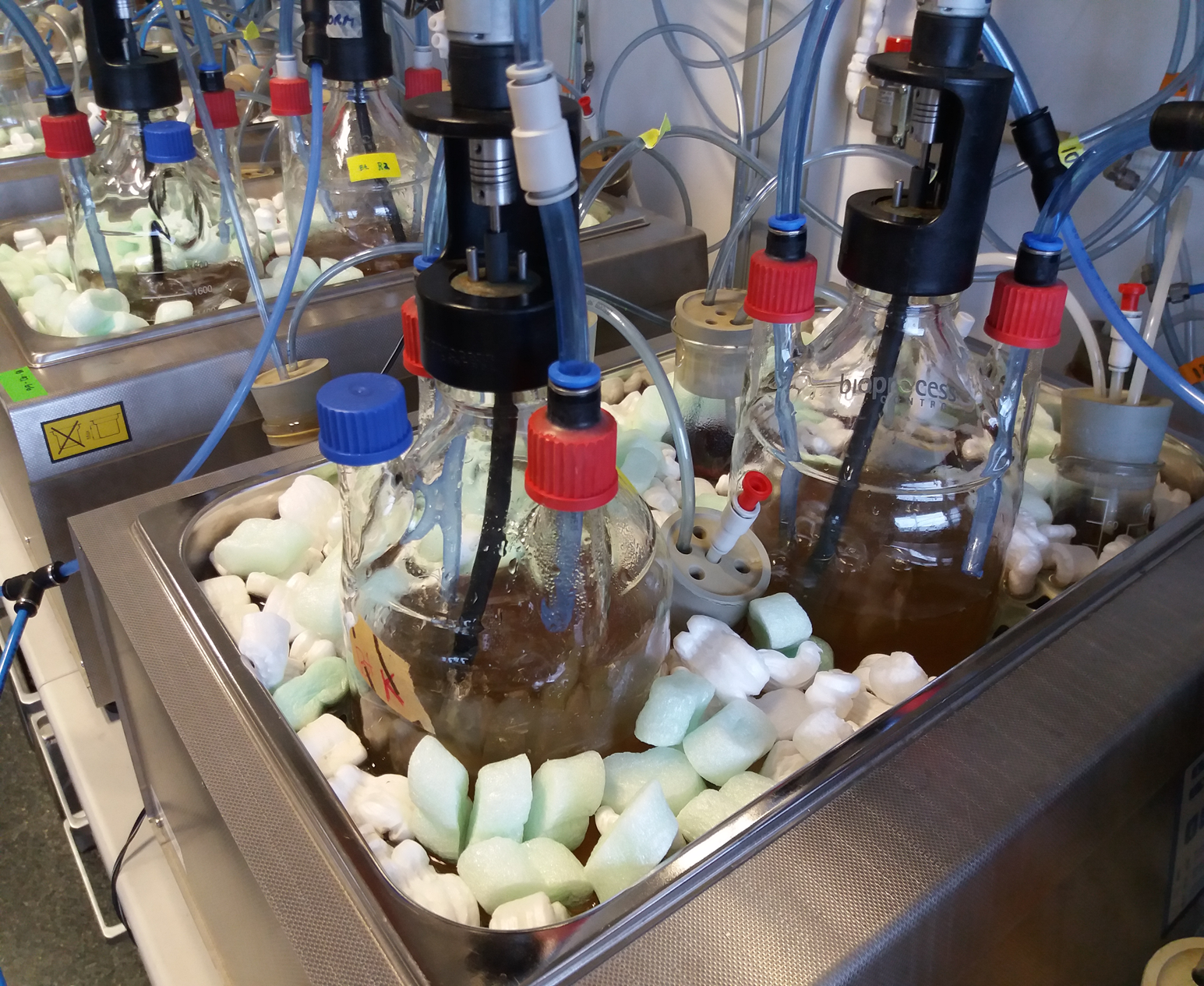The final version of the report on the possibilities of digestate valorisation was released in August 2017. The results proved that digestate has potential for the production of all the assessed bioproducts, however additional optimisation steps would be required to make the productive process feasible. This deliverable reported that, after an intensive screening, the selected bioproduct is the biopesticide, produced by a commercially available specific strain. This product will be sent to REFARMERS in order to perform the first experiments on the products’s potential for plague control.
The final version of the deliverable related to the valorisation of digestate was released last August. In this document the UAB researchers showed the potential of digestate as a raw material for the production of several value-added products using the solid state fermentation technology.
The UAB team has developed a series of experiments at bench scale in order to select the most suitable value added product to be obtained from digestate (Figure 1). The digestate was obtained from a local waste treatment facility, where source selected wastes are treated. Results showed potential for several bioproducts, such as hydrolytic enzymes, biosurfactants and biopesticides, however optimization steps must be carried out in most cases. The most promising results were obtained for biopesticide production, which is a product with great perspectives for further agricultural use.
The production of biopesticide is achieved by the Bacillus thuringiensis bacteria (Bt), which is a commonly used biopesticide with high presence in the area of commercial additives for agricultural uses. Bt is able to produce a crystal protein which is highly toxic for insects, but harmless for mammals, birds or fish.
These characteristics make this specific biopesticide an interesting product to use for plague control. This product is normally commercialized as a solid powder to be suspended in water as a spray for natural insect control, specifically for tent caterpillars, gypsy moth, cabbage looper, tomato hornworm and other leaf eating caterpillars on trees, shrubs, tomatoes and other vegetables.
This product is of great industrial importance due to the potential direct use of a Bt-enriched product (solid or liquid) into soil or plants using a low-cost technology and digestate as the raw material. UAB researchers have developed the complete methodology to grow and harvest Bt at a lab scale using different operational configurations and exploring molecular biology tools to monitor the process (Figure 2). The released deliverable points out that this bioproduct was selected for the pilot scale experiments and further optimization.
The latest conversations between UAB and REFARMERS confirmed that, in the next weeks, samples of Bt-enriched product in a liquid form will be sent to France to assess its potential as plague control. The first results of these experiments are expected to be available early in 2018.
The following steps are to optimize and standardize the productive process to make the process cost-effective. Once these data are collected, the UAB team in collaboration with Aeris Technologies, will start the process of design and configuration of the demonstration reactor.

